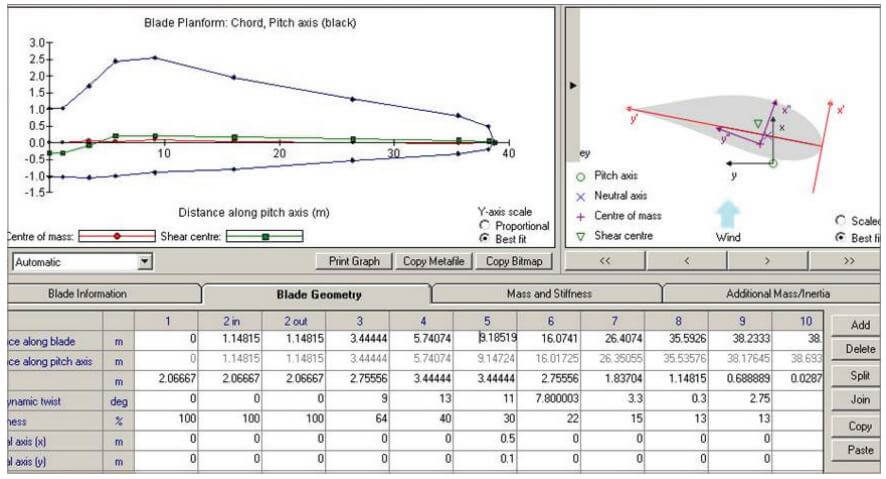Optimizing the design of a wind turbine is key during every phase of its design. Failure to correctly model loads, harsh environments, and structural integrity or to perform accurate testing can greatly jeopardizee the long-term safety, functionality and profitability of an asset. Therefore, the advancement of wind turbine design analysis tools can enable better designed turbines, with lower modelling costs, and in shorter periods.

The advancement of wind turbine design analysis tools can enable better designed turbines, with lower modelling costs, and in shorter periods.
Used as the primary simulation tool in the design of approximately half of the utility scale wind turbines manufactured worldwide, DNV GL’s Bladed wind turbine modelling solution has undergone a big transformation to improve functionality and user experience. The new features of Bladed 4.8 include Bladed Cloud, Multipart Blade and Result Animation. After 18 months of evolution, the cutting edge simulation tool now boasts greater technical capabilities to enable manufacturers to develop the next generation of wind turbines, whilst reducing costs and design time.
Wind turbine design projects require large sets of calculations to be performed regularly and a single set can require thousands of hours of computing power. The new Bladed Cloud service gives turbine designers the ability to optimize designs using the virtually limitless computing resources of Amazon Web Services. The on-demand computing platform means that turbine designers no longer require high performance computers. Users can simply click one button in Bladed and their calculations are sent to the Cloud for processing. This saves significant IT upgrade costs and cuts turbine design time.
Accurately modelling a turbine blade is absolutely essential for any designer. Any uncertainty in the accuracy of a model means a risk of finding turbine design flaws once the turbine has begun operation. The new Multipart Blade non-linear structural model reduces uncertainty in blade vibration predictions. This extends Bladed’s ability to model turbine behavior, bringing greater accuracy to large turbine modelling, thus lowering design uncertainty and risks.
Using Bladed’s new 3D animation graphical environment, users can view the simulated turbine behavior by ‘panning’ around the 3D model and observing the motion of the structure from any angle. Bladed’s Result Animation gives users greater insight into turbine performance in a simulated scenario.
Patrick Rainey, Bladed Product Manager, DNV GL – Energy said: “This new functionality is an important expansion of Bladed’s capability and helps manufacturers to remove risk, uncertainty, and speed up design modelling and cut costs.”
He continued: “Wind turbine modelling in the design phase is incredibly important. If a design isn’t accurately tested and a failure mode not detected, then the final operational design could encounter serious problems and cost a manufacturer in terms of reputation, lost revenue and time to find a solution. Bladed is the most technically accomplished and sophisticated engineering tool for turbine design. Developed over more than 20 years, Bladed is leading the way in wind turbine technology design and continues to advance the designs of turbine manufacturers across the globe.”
For more: www.dnvgl.com/bladed
Filed Under: Blades, News, Software




